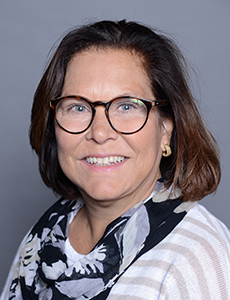Here Are the 4 Workers’ Comp Trends Payers and Providers Should Keep on Their Radar

The insurance industry is facing a reckoning in the wake of the pandemic, talent acquisition woes, and market uncertainty — and workers’ compensation is no different.
As leaders are forced to adjust, operational challenges have become opportunities, especially in the realm of empathetic care models like the much-lauded psychosocial approach, and in new risk management strategies adding value for clients and insureds.
Mike Zblewski, director of safety services for national accounts, Sentry, believes the new value added services his company developed in the pandemic has had major benefits for insureds, but was also surprised to learn how his organization benefited.
“Our services and the things that we deliver, we were on site and delivered risk management value that way. The COVID pandemic forced us to take a step back and rethink. For us, we ended up embracing the virtual platform. It forced us to be more creative to look at resources we never would have tapped internally. From that, we found areas we never knew we could leverage and never knew we were good at,” he said.
Sentry now holds monthly webinars to expand and reach customers, which have been popular with insureds and which they plan to continue.
“The keyword to all of this is creativity,” said Jeff Cole, AVP of national accounts & FEMP at Sentry.
“If we look at our largest customers, they’ve faced supply chain issues, the need to change products, and even more so now staffing challenges. So out of necessity a lot of our customers got very creative in order to survive. In response to that we did too.”
Amerisure Insurance’s Anne Marie May, regional vice president – risk management, saw similar results from the necessary COVID pivots.
“Fully operational technology programs include Commercial Auto Telematics/Usage-Based Insurance to modify driving behaviors, digitally connected Wearables to help monitor, analyze and reduce ergonomic injuries while workers are performing their jobs, and Virtual Reality training to enhance employee learning in a safe setting,” she said.
As the world continues to shift rapidly as a result of the pandemic and other factors, here are four evolving workers’ comp trends to watch.
1) Virtual Reality is Coming for Comp
Market research suggests that virtual reality platforms across the health care sector are rapidly growing as the technology develops, and is expected to reach 18.7 billion by 2028. Patient rehab is one part of this market, with workers’ comp providing near perfect test cases for how VR can help pain control.
This growth has compounded clinical management pressures, as these companies stare down an unprecedented provider shortage. A recent study from the American Medical Association predicted a shortage of between 37,800 and 124,000 physicians within 12 years, with specialists leading the shortfall.
For Kathryn Farley-Agee, vice president, provider network product development at Coventry, this has forced conversations around how to build networks for ideal care scenarios.
“On the network side, the question becomes, what providers do you need?” Farley Agee asked.
“Is it really MDs? Not today. It’s psychologists, it’s clinical social workers—mid-level providers. One example is California. Just in the last month, they passed a law that said you can have LCSWs [licensed clinical social workers] in the medical provider network, that’s a major shift. I think we’ll start to see more of that, because what the states are hearing is that we need access.”
2) MSAs: Another Top Concern
The added complexity is driving the fraught Medicare Set-Aside space as well, with astronomical MSAs causing insurers to leave medical open indefinitely in an effort to resolve files. Jeff Stinson, attorney with Swift Currie, says his clients are feeling that pinch with a duration cap on medical benefits in his state.
“There’s not a lot of consistency to get acceptance on the MSA,” he explained.
“There’s some examiners that will say it’s signed by a judge so it’s approved, and you’ve taken our interest into consideration. The person in the cubicle next to that reviewer could reject it. There’s no consistency and so there’s no way to give accurate guidance with any certainty.”
Coupled with an increasingly complicated medical picture, the workers’ compensation industry faces a long-term decline in claims, necessitating the value-add proposition’s rise in both medical and loss control arenas. NCCI’s latest State of the Line Report shows that lost-time claim frequency data suggests the long-term decline continued in 2021, despite a slight rise in frequency over the year.
“Declining claims frequency is the new normal, to the credit of risk managers on the front end who continue to implement policies, procedures and programs to prevent accidents and events that lead to worker’s comp claims,” said Del Doherty, founder and CEO, Prodigy Rx.
“Organizations with the old claims volume-based model for success will continue to struggle under this new normal.”
3) The Great Resignation
A big part of this new normal in a post-COVID world is the existential threat faced by the Great Resignation. The “quits rate,” as tracked by the U.S. Department of Labor’s Bureau of Labor Statistics Job Openings and Labor Turnover Survey (JOLTS) topped the charts again, with three percent voluntary employee-initiated separations, the highest rate seen in the series.
For Stephanie Arkelian, senior director of product management at Healthesystems, this means shoring up key areas of the business to weather the storm.
“For us, it’s about doubling down in areas where we’ve always striven to provide support to our partners. For claims staff challenges, this means delivering easy-to-use technology and workflow automation that remove claim staff burden, create efficiencies, and allow claims organizations to do more with less,” she explained.
It also means embedding clinical decision support into tools to help claims staff who may be newly hired or less experienced. How can you deliver technological infrastructure that your partners can tap into without taking on that technological burden themselves?”
4) More Empathetic Claims Handling Remains Important
Despite the macroeconomic shifts, claims management continues to drive toward more empathetic practice.
“The job of a claims adjuster isn’t easy. Being able to switch from service with a smile to being adversarial all the while under very real-time pressures makes the role a challenge,” said Steve Donnelly, chief claims adjuster at Amerisure Insurance.
“I can think of few things more rewarding for those adjusters than helping an injured worker overcome the many challenges of a severe injury and return to being a healthy and productive person. In my experience, people just want to be able to make a difference,” he added.
Navigating that dichotomy is one area that experienced claims professionals in the space see continuing to improve as the psychosocial care model develops and acceptance of it grows.
“Claims adjusters back in the day thought that they were needing to protect their space, and that didn’t lend itself to trust,” explained Matthew Zender, SVP work comp strategy, AmTrust Financial Services.
“If you offered trust, you often were betrayed. It led to a vicious downward cycle. When we started to move towards the psychosocial approach, what we’re doing is moving away from treating injured workers as claimants to viewing comp as a benefit. That’s a real difference in mindset. A benefit is something you’re owed and a claim is something you’re asking for.”
This extends especially to mental health treatment integration, a key part of psychosocial approaches that the industry accepts leads to better outcomes.
“We’re seeing a lot of interest now from claims organizations in finding ways to better integrate behavioral health in the workers’ compensation claims management ecosystem,” said Arkelian.
“How can we make it easier for claims staff – especially new or less experienced adjusters – to navigate the sometimes complex decisions involved on a claim? This has always been important, and is even more so, in today’s staffing environment.”
Tammy Bradly, senior director of clinical product marketing, Genex, concurs. “From a claims perspective, it’s really brought about the need for innovation and automation. Many companies out there are suffering from staff shortages, so any process improvements that can drive efficiency should be considered and I think they are being considered now.”
Lower claims frequency, complicated medical, and the drive to staunch the bleeding from the Great Resignation may prove to be the crucible that allows the industry to evolve to compassionate meaningful work and better outcomes. Only time will tell. &












